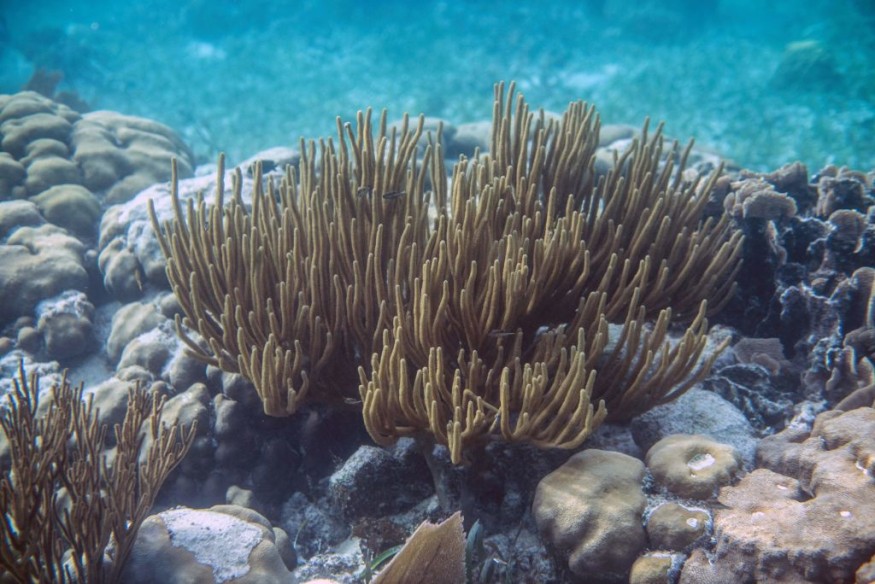Alexis Rosenfeld, a photographer, and explorer, recently uncovered a giant, highly valuable reef nearly 200 feet in length, about 30 to 65 meters beneath the surface.
According to a Good News Network report, a scientific study mission has discovered one of the world's most gigantic coral reefs "off the coast of Tahiti.
The rose-shaped corals' pristine condition, as well as the reef's sheer size, make this quite an unusual find. This discovery is considered one of the most extensive coral reefs ever recorded with the size mentioned.
Additionally, the enormous rose-shaped corals, pictured in images captured by Rosenfeld, are said up to six feet in diameter.
ALSO READ : Why Coral Reefs Turn White? Science Explains

The Giant Coral Reef
Up until the present, the vast majority of the known coral reefs of the world are at depths of up to 25 meters. Therefore, this discovery proposes more gigantic reefs out there, at greater depths.
Rosenfeld described the oversized reef, "It was magical" to have witnessed giant, beautiful rose corals stretching "as far as the eye can see." The French explorer and founder of 1 Ocean added the discovery was like a work of art.
1 Ocean is in partnership with UNESCO in the Decade of Ocean Science for Sustainable Development crusade.
Every year, until 2030, expeditions financially backed by UNESCO will be performed across the ocean for the mapping of biodiversity, as well as look for solutions to any threats.
Coral reefs are undoubtedly and undeniably essential. More than six million people work in small-scale fisheries that depend on tropical reefs. In areas with high malnourishment rates, fisheries are helping to feed hundreds of millions of coastal people.
An Outstanding Discovery, Incredible Scientific Work
According to Audrey Azoulay, the UNESCO Director-General, until at present, "we know the surface of the moon" better compared to the deep ocean. Azoulay added only 20 percent of the whole seabed had been mapped.
This outstanding discovery in Tahiti reveals the scientists' incredible work. With support from UNESCO, they are those who further the extent of knowledge about what lies underneath, the director-general said in a statement.
French Polynesia, in particular, suffered a substantial bleaching event in 2019. Nonetheless, this specific reef does seem to have been substantially affected.
Moreover, the finding of such a pristine reef demonstrates that coral at deeper depths may be better shielded from climate change.
Technology in Reef Examination
Until at present, very few researchers have been able to find, investigate and examine coral reefs at depths of 30 meters or 100 feet.
As explained in a similar Open Access Government report, technology means "longer dives at greater depths." As a whole, the team performed 200 hours of dives to examine the reef. They were able to witness the coral spawning.
UNESCO, with its Intergovernmental Oceanographic Commission or IOC, is the UN agency whose responsibility is to carry out ocean research. It was founded in 1960 and joined by 150 nations.
Report about the recent giant coral reef discovery is shown on UNESCO's YouTube video below:
RELATED ARTICLE : 3D Printing Helps Rehabilitate Vital Coral Reefs in Hong Kong
Check out more news and information on Coral Reefs in Science Times.
© 2025 ScienceTimes.com All rights reserved. Do not reproduce without permission. The window to the world of Science Times.












